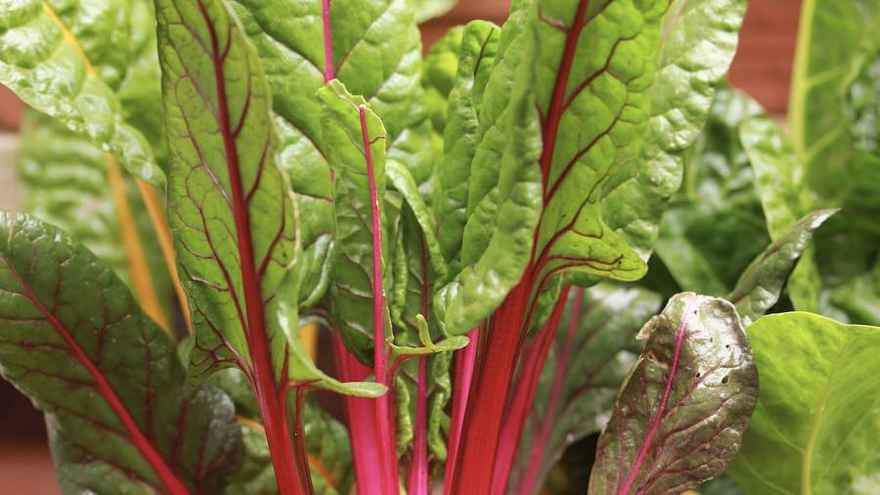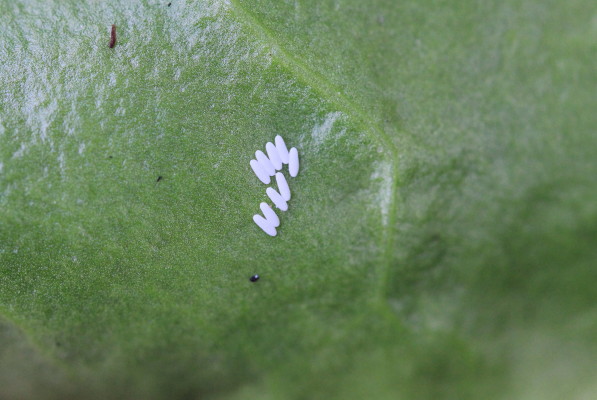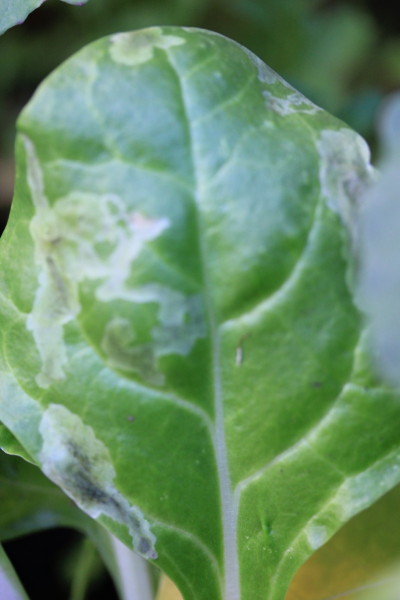Blotches on your beetroot or chard?

Some of you have been in touch recently about dark marks on the leaves of your chard and beetroot plants. These are the work of leaf miner. This is the larva of a fly that lays its eggs on the leaves. When the larvae hatch, they burrow into the leaves, eating it from the inside, making tunnels that scar the leaf. This is a common pest that isn't usually fatal - but it can be quite a pain! What can you do about it? Here are some ways you can control them:

Batches of eggs like this are clearly visible on the backs of the leaves. Squishing them is a very effective form of defence!
If the problem is bad in your area you can delay sowing your chard - as leaf miner is usually at its worst in late spring and early summer. Instead, trying sowing it in August or September for an autumn and winter crop. The last line of defence, the nuclear option, is simply not to grow chard or beetroot. This is rather drastic, but I know a few people who've found the fly such a nuisance they've given up. However, if you follow the above steps, you have a good chance of keeping this annoying pest under control
4 Ways to control leaf miner
- Pick off infected leaves as soon as you see them - and destroy. Don't compost infected leaves as the larvae can pupate and survive in compost. The earlier you pick the infected leaves the better. If you leave them, the larvae will mature in just 2 to 3 weeks, then drop to the soil, where they will pupate and then hatch to repeat the cycle... There are usually two or three generations each year. Luckily, the infected leaves you remove are still edible - just cut out the infected areas and eat the healthy parts of each leaf in the usual way.

Larvae of the leaf miner fly make these nasty blotches on chard and beat leaves. Once you remove the infected areas, the rest of the leaf is still fine to eat.
- Protect your crop from the flies with a fine mesh (eg enviromesh). This is effective if a little unsightly - but you need to put the netting up at the start of the season before any eggs are laid.
- You can squash the eggs before they hatch by rubbing the back of the leaves with your hand. You'll see the eggs in small clusters on the back of th leaf. This is quick and effective if you only have a few plants.
- The fly's pupae can survive the winter in the soil in winter, ready to reinfect the next year. To reduce the numbers of pupae, dig over the top surface of your pots in winter to expose them to the cold.

Batches of eggs like this are clearly visible on the backs of the leaves. Squishing them is a very effective form of defence!

1 comment
Really helpful, this is what it is. Thank you.
Leave a comment